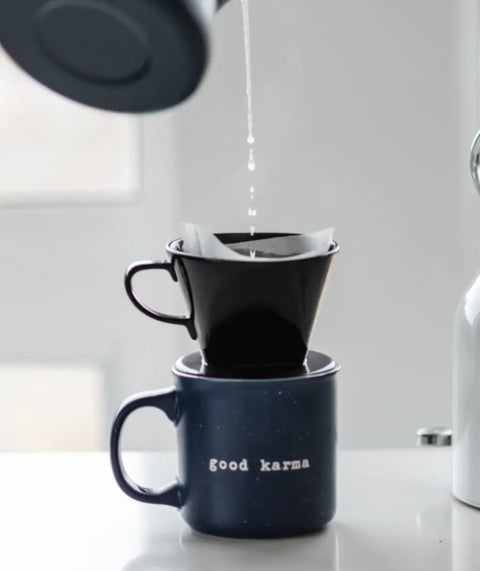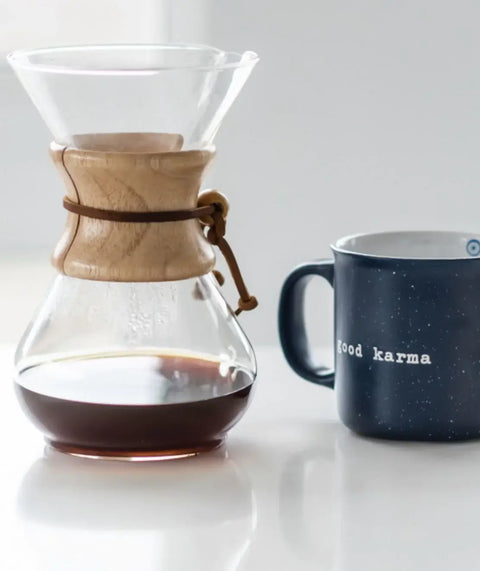
The Beginners Guide to Coffee Beans: Exploring Flavors and Types
Coffee can transform a morning from dull to delightful. The first sip from a carefully brewed cup can set a positive tone for the day ahead. Over half of adults in North America enjoy coffee daily, yet many remain unaware of the fascinating history and detailed processes involved in bringing this beloved bean to cup to their tables.
The Legend of Coffee
Legend speaks of a young Ethiopian named Kaldi who owned a goat herd. Each day, he would let his goats out to graze, expecting their return by evening. One evening, as the sun set, his goats didn't come back. Concerned, Kaldi stayed up the whole night awaiting their return.
With the first light of dawn, Kaldi set out to find his lost herd. He discovered them leaping around energetically near some trees with bright red cherries. Intrigued, Kaldi tasted the cherries and felt an invigorating burst of energy after his long night.
Kaldi shared his findings with the local monks. Interested in the cherries, the monks began roasting and brewing the beans found inside. This led to the creation of the very first cups of coffee. Over the centuries, coffee spread from this small discovery in Ethiopia to become a beloved drink worldwide, eventually reaching your morning table.
Coffee Varieties
Coffee varietals are unique subspecies of coffee plants, each offering distinct flavors, growing conditions, and characteristics. Knowing these varietals enriches your coffee experience by showcasing the diversity and depth each type adds to your cup.
Despite its name, coffee is technically not a bean; it is actually the pit of a coffee cherry. However, we still commonly refer to it as a bean. While there are many varieties of coffee, only two are predominantly cultivated: Robusta and Arabica. It takes a coffee plant five years to mature and start producing beans. These bushes can reach up to 5 meters in height, but they are typically pruned to around 2 meters for easier harvesting. Each plant can yield anywhere from 1 to 11 pounds of beans per year, depending on the growing conditions of that season.
Robusta Coffee Beans
Robusta beans have a shorter growing season, leading to quicker production. They thrive at lower altitudes and yield more cherries per plant. These bushes are resilient, withstanding pests and diseases more effectively. As a result, Robusta constitutes around 40% of the world's coffee beans. This ease of cultivation, coupled with resistance to rust and higher yields, makes Robusta beans generally cheaper—about half the cost of Arabica beans. Additionally, Robusta beans contain more caffeine, though their flavor can be harsh and bitter.
Arabica Coffee Beans
Arabica coffee bushes require a longer growing season, which means fewer harvests and a lower yield per plant. These beans grow at higher altitudes and are more vulnerable to diseases like coffee rust. Factors such as disease and climate change add to the growing costs. Despite these challenges, Arabica coffee accounts for 60% of the world's coffee beans. Consumers favor Arabica for its lower caffeine content and superior taste. The flavor profile is often described as smoother and more enjoyable than Robusta.
Coffee Growing Regions
Coffee thrives best in regions near the equator, between the Tropic of Cancer and the Tropic of Capricorn, an area often called the “Bean Belt.” The flavor of coffee is influenced by several factors, including the location where the plants are grown, the soil quality, altitude, temperature, and rainfall. While the primary flavors from a bean crop remain consistent year after year, the more subtle notes can vary slightly with each season.
Coffee from Central and South America
In Central and South America, coffee beans often possess hints of chocolate and nuts. Key coffee-producing nations in this area include Mexico, Guatemala, Costa Rica, Brazil, and Colombia. El Salvador and Honduras also contribute significantly, and Panama is known for its seasonal specialties.
Coffee from Africa
African coffee beans typically exhibit fruity flavors reminiscent of dry wine or dried fruit. Major producers in this region are Kenya, Ethiopia, and Tanzania. Countries like Rwanda, Burundi, Congo, and Uganda also produce notable coffee beans that have been featured at Cupper's.
Coffee from Southeast Asia
Coffee grown in Southeast Asia is characterized by lower acidity, making it a good choice for those with sensitive stomachs. The beans often deliver a spicy and smooth flavor profile. Indonesia, India, and Sumatra are leading producers in this region. Notably, the term "Java" for coffee originates from this region.
The Coffee Plant
Coffee beans come from the pit of a cherry that grows on coffee plants. On a single branch, it is common to find buds, flowers, and both green and ripe cherries, creating a complex harvesting process.
The red fruit of the coffee cherry is edible and quite sweet, with a flavor more reminiscent of hibiscus or berries than coffee. This fruit contains some caffeine, which acts as a natural pesticide for the plant.
Typically, each cherry contains two beans. However, some cherries contain only one bean, known as Peaberry coffee. Green coffee beans have a thin membrane called silverskin, which is not visible until the beans are roasted. During roasting, this skin sheds as chaff and is usually discarded.
Coffee Harvesting Methods
Coffee plants can display buds, flowers, green cherries, and ripe cherries simultaneously, making harvesting a tricky task. Harvesting methods vary between strip picking and selective picking.
- Mechanical harvesting is done by machines shake the coffee cherries loose and collect the falling cherries. It is an efficient method that is used by large-scale farms on relatively flat terrain.
- Strip picking involves removing all cherries from branches regardless of their ripeness. This method is utilized for lower-quality coffee because it is quicker and less expensive.
- Selective picking, on the other hand, focuses on hand-picking only the ripe cherries, and it is generally reserved for high-quality Arabica coffee. Workers revisit the same trees every 8-10 days to ensure only the best cherries are harvested.
A proficient coffee picker can gather 100 to 200 pounds of cherries daily, which translates into 20-40 pounds of coffee beans. They are compensated based on their productivity and quality, so higher yields and better quality result in better earnings. After a day’s effort, the cherries are sent to a centralized facility for processing.
Coffee Processing
Wet / Washed Method
In the wet or washed method, a substantial amount of water is used. After harvest, the fruit is removed from the coffee beans, leaving only the parchment skin. The beans are then weighed, sorted by size, and placed in large fermentation tanks for 12-48 hours. During fermentation, natural enzymes dissolve the mucilage layer. Once rinsed, the beans are ready for drying, which can be done mechanically in 1-2 days or sun-dried for 3-16 days.
Eco-pulped processing is similar but uses significantly less water, making it more eco-friendly.
Dry / Natural Method
The dry method, older and common in water-scarce regions, involves spreading fresh cherries on large sunlit concrete pads. These cherries sun-dry over many days or weeks. Workers frequently rake the cherries to ensure even drying and prevent rot. The drying process continues until the cherries reach around 11% moisture content.
Honey Method
In the honey method, less common than the other two, the cherries are pulped but not rinsed. Both pulp and beans dry together. This method is further categorized into yellow, red, or black, based on the amount of pulp retained with the beans.
Coffee Grading
Coffee grading is the process of evaluating and classifying coffee beans based on several quality factors. This assessment is crucial for determining the value and marketability of the beans. The grading process typically considers the following criteria:
- Size and Uniformity: Beans are sorted by size using sieves. Larger and more uniform beans are generally preferred as they roast more evenly.
- Color: The color of the beans can indicate their quality. High-quality beans are typically bright and vibrant, while lower-quality beans may appear discolored or faded.
- Defects: Beans are examined for defects such as insect damage, mold, fermentation issues, and broken or chipped beans. The number and type of defects are used to assign a grade.
- Density: Denser beans are often considered of higher quality because they usually come from high-altitude regions and have more concentrated flavors.
- Moisture Content: The moisture level of the beans is measured to ensure they are within an optimal range, typically between 10-12%. This affects the roasting process and the final flavor of the coffee.
- Cup Quality: The most important aspect of grading is the taste test, often referred to as cupping. Trained professionals evaluate the flavor, aroma, acidity, body, and aftertaste of the brewed coffee.
The grading system can vary by country and organization, but generally, beans are classified into categories such as specialty, premium, and commercial grade. Specialty-grade coffee is the highest quality and is free of primary defects, while commercial-grade coffee may have more defects and less desirable flavor characteristics.
Green Coffee Beans
Green coffee refers to processed, unroasted coffee beans. Two crucial elements in the coffee industry impact the final cup quality. When green coffee is first harvested it has an average 50% water ratio, but after sun drying (before the roasting process) this drops to 11% locking in the flavor. As a raw food item, handling requires extra care to avoid moisture, temperature and pests. These processed beans are typically stored in jute or burlap bags, or in plastic-lined containers. Bulk coffee is then loaded into shipping containers for export.
Green coffee beans can also be used to brew Green Coffee Bean Extract. This extract, containing a small amount of caffeine, is often added to various beverages, offering a mild caffeine boost.
Coffee Roasting
At Twisted Goat Coffee, the roasting process begins with Meagan or Ryan, both the master roasters. Thousands of pounds of green coffee beans arrive annually at the roastery. Freshness is key, so the roasting happens 3-4 times a week, roasting to order and shipped within 48 hours after being roasted to customers.
The process kicks off with the Toper roaster. Once the roaster has reached the right temperature, the green coffee beans are loaded into the roaster.
Each roast has a specified temperature it needs to reach before its complete. When it does the coffee is dropped into the cooling tray to halt the roasting process. The cooled beans are then put through a destoner and sent to the packaging area.
Each step is crucial to maintain the quality that Twisted Goat Coffee is known for. The dedication to fresh roasting ensures the beans are always at their peak when customers enjoy their coffee.
Coffee Strength
Ratio
When discussing coffee strength, the ratio of coffee to water plays a significant role. A stronger coffee typically results from a higher concentration of coffee relative to the water used. For instance, espresso, a concentrated coffee form, is stronger than the same volume of drip coffee due to its higher coffee ratio.
Bitterness
Bitterness is another aspect some people refer to while talking about coffee strength. Bitter coffee often results from improper brewing, roasting, or poor-quality beans. High-quality beans and careful preparation help avoid undesirable bitterness.
Roast Level
Roast degree can also influence perceptions of strength. A dark roast coffee is often labeled as strong because of the rich, bold, and intense flavor characteristics. They have a diminished acidity, and you can taste strong roast notes, e.g., dark chocolate, toasted nuts, and smokiness. However, the roast level doesn't make the coffee stronger in terms of caffeine or concentration, only alters its taste profile. On the other hand, light roasts have a bright acidity, delicate flavors, and pronounced origin characteristics. They often have floral, fruity, and tea-like notes with a light body.
Caffeine Amount
The type of coffee bean largely determines caffeine content. Robusta beans generally possess nearly double the caffeine of Arabica beans. Furthermore, roast level slightly affects caffeine levels. Light roasts contain a bit more caffeine than dark roasts, as long roasting times can reduce caffeine content. Yet, for most people, these differences are negligible unless consuming large amounts daily.
Brewing Coffee
Brewing the perfect cup of coffee involves a combination of quality beans, precise measurements, and proper technique.
Choose High-Quality Coffee Beans
- Freshness: Use freshly roasted coffee beans, ideally within 2-3 weeks of roasting.
- Grind: Grind the beans just before brewing for maximum freshness. The grind size should match your brewing method (coarse for French press, medium for drip, fine for espresso).
Measure Your Coffee and Water
- Coffee-to-Water Ratio: A common ratio is 1:16, which means 1 gram of coffee for every 16 grams (or milliliters) of water. Adjust to taste.
- Scale: Use a kitchen scale for precise measurements.
Use Clean, Filtered Water
- Water Quality: Good water is essential. Use filtered water to avoid any off-flavors from tap water.
- Temperature: The ideal water temperature for brewing coffee is between 195°F and 205°F (90°C to 96°C). Too hot and it can burn the coffee; too cool and it won't extract properly.
Choose Your Brewing Method
- Drip Coffee Maker: Convenient and consistent. Follow the manufacturer's instructions and ensure your machine is clean.
- French Press: Coarse grind, steep for 4 minutes, then press the plunger down slowly.
- Pour-Over: Medium grind, pour water in a slow, circular motion, allowing the coffee to bloom and then drip through.
- Espresso Machine: Fine grind, tamp the grounds evenly, and pull a shot within 25-30 seconds.
Brew with Care
- Bloom: If using a pour-over or French press, let the coffee bloom for about 30 seconds by adding a small amount of hot water to the grounds, allowing them to release gases and expand.
- Timing: Pay attention to the brewing time, which varies by method. For example, a pour-over typically takes 3-4 minutes, while a French press takes 4 minutes.
Serve and Enjoy
- Pre-warm Your Cup: Warm your coffee cup with hot water before pouring in your coffee to maintain the optimal temperature.
- Taste and Adjust: Taste your coffee and adjust the grind size, coffee-to-water ratio, or brewing time to suit your preference.
Tips for the Perfect Cup:
- Experiment: Try different beans, grind sizes, and brewing methods to find what you like best.
- Consistency: Maintain a consistent routine once you find your preferred method.
- Clean Equipment: Regularly clean your coffee maker and grinder to avoid any build-up that can affect the taste.
By paying attention to these details and fine-tune your process, you can brew a perfect cup of coffee that suits your taste.
Good to know
Common questions answeredHow To Grind Coffee Beans?
Select a grind size that matches your brewing method (coarse for French press, medium for drip, fine for espresso). Use a quality burr grinder for consistent grind size, as blade grinders can produce uneven grounds. Grind your beans just before brewing to maximize freshness and flavor, and adjust the grind size if needed based on your taste and brewing results.
How Long Do Coffee Beans Last?
For optimal freshness and flavor, they should be consumed within 2-3 weeks of roasting. BUT freshly roasted whole coffee beans can last up to a year in a sealed package, and one week to a month once opened. Ground coffee beans have a shorter shelf life, remaining fresh for a few months if unopened, but should be consumed within a few days once opened.
Where Do Coffee Beans Come From?
Coffee beans come from the seeds of coffee cherries, which grow on coffee plants. These plants are primarily cultivated in regions near the equator, known as the "Bean Belt," which includes countries in Central and South America, Africa, and Asia. The two main species of coffee plants are Arabica and Robusta.
How To Store Coffee Beans
To keep your coffee beans fresh, protect them from air, moisture, heat, and light. Here are some tips:
- Use an Opaque, Air-Tight Container: Store your beans in an opaque container to block light, and make sure it’s air-tight to prevent exposure to air and moisture.
- Keep in a Cool, Dark Place: Avoid storing beans in places that are warm or exposed to sunlight. A cabinet away from the oven and direct sunlight is ideal.
- Retail Packaging: While retail packaging is good for short-term storage, it's not ideal for long-term. Transfer your beans to a storage container with an airtight seal for extended freshness for the-long term.
Try Our Coffee Beans
Try our coffee beans at Twisted Goat Coffee! We offer house blends and single-origin options, each with detailed descriptions to help you find your perfect match. Whether you're a coffee snob or just looking to upgrade your morning brew, our beans deliver great profiles and freshness. Plus, for those who need larger quantities, we provide bulk coffee options to keep you well-stocked. Give Twisted Goat Coffee Beans a try and elevate your coffee experience!




